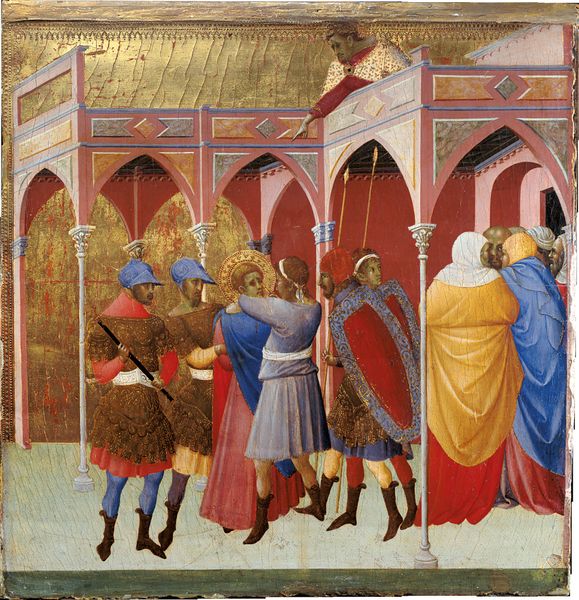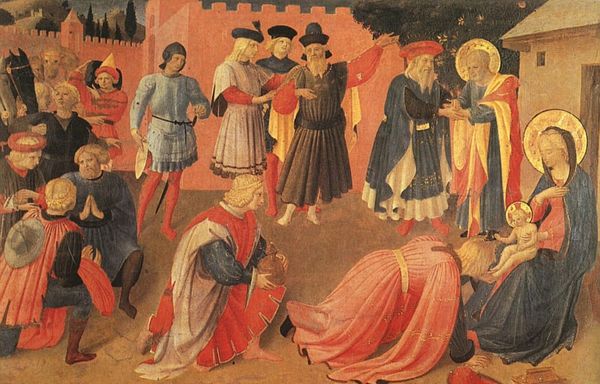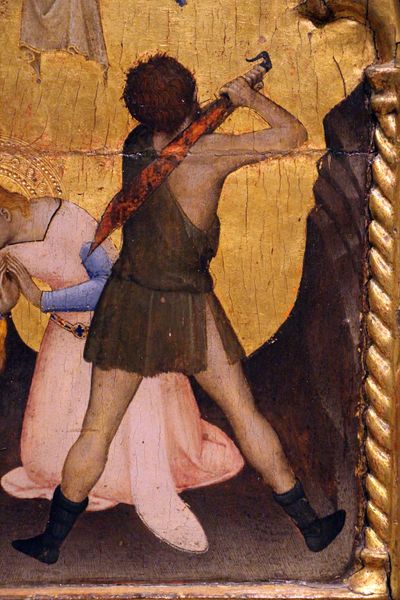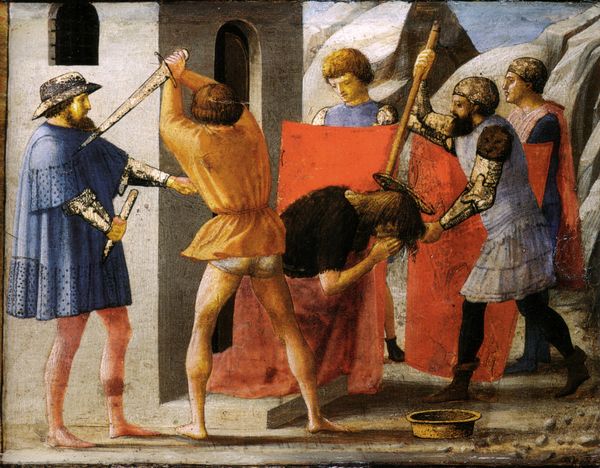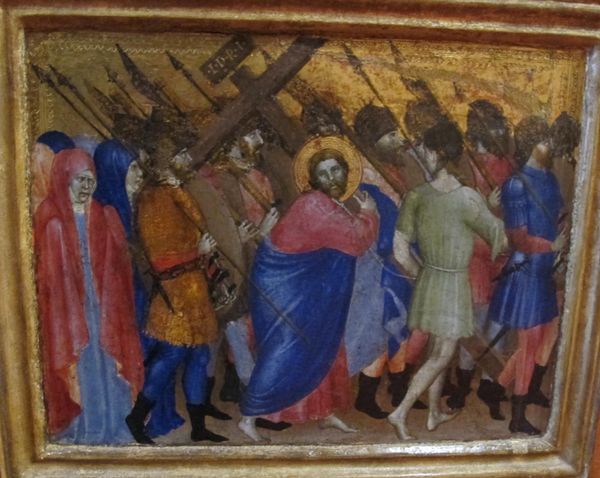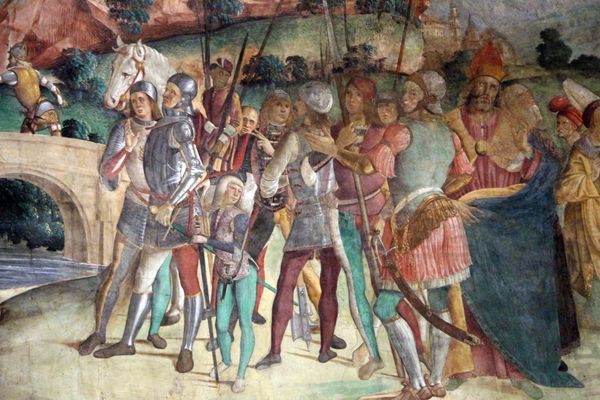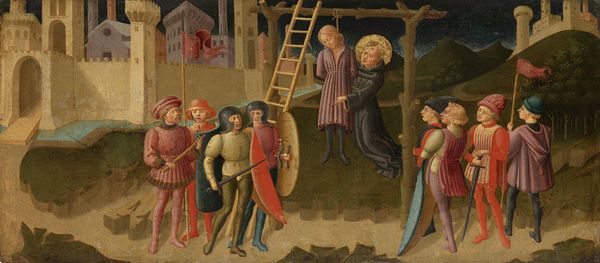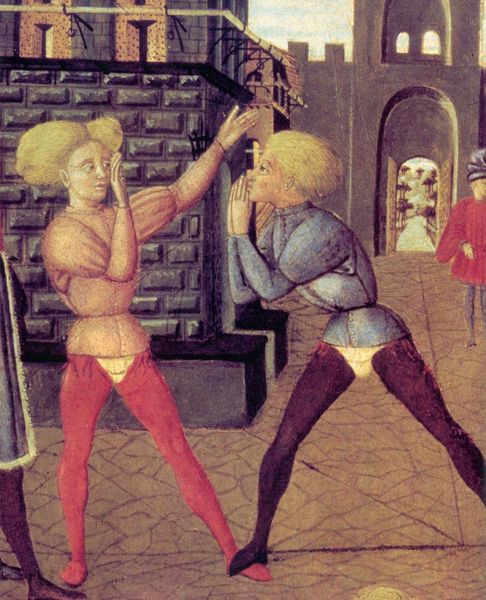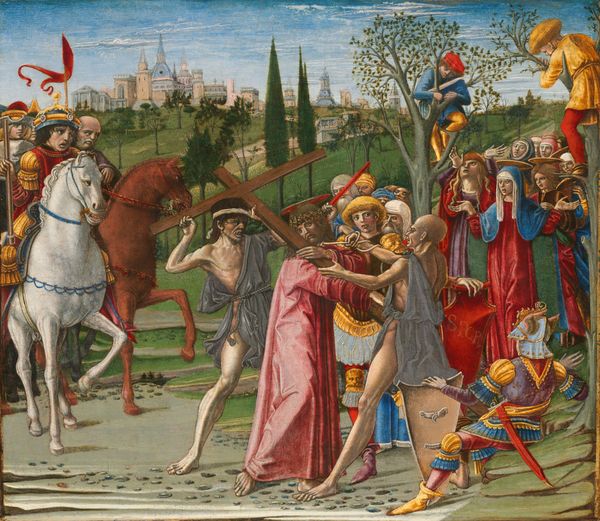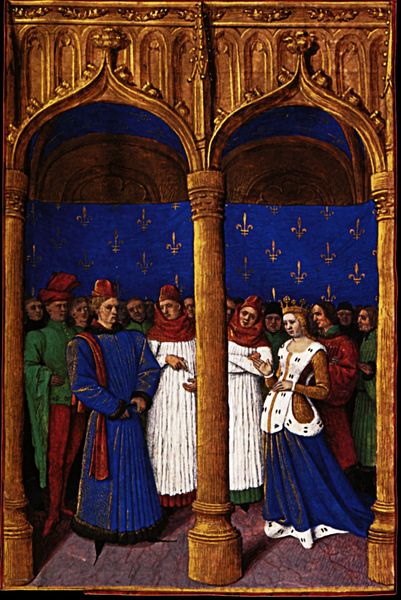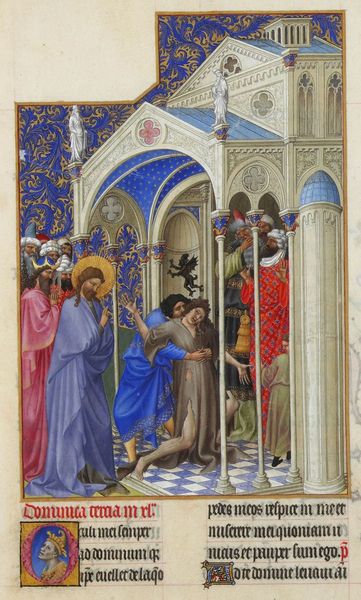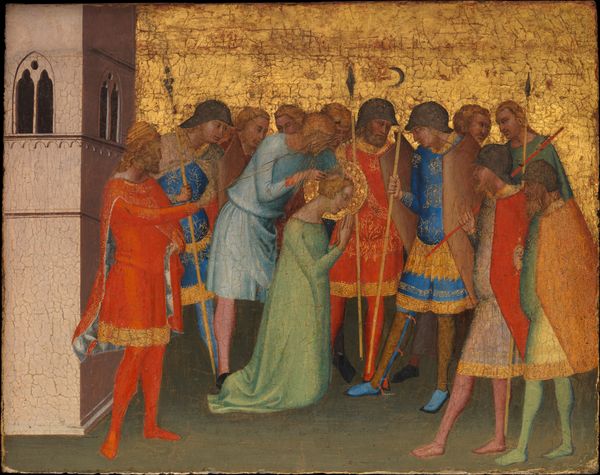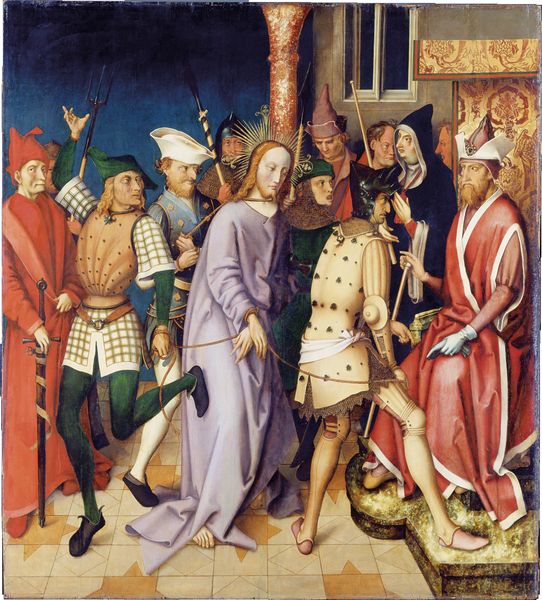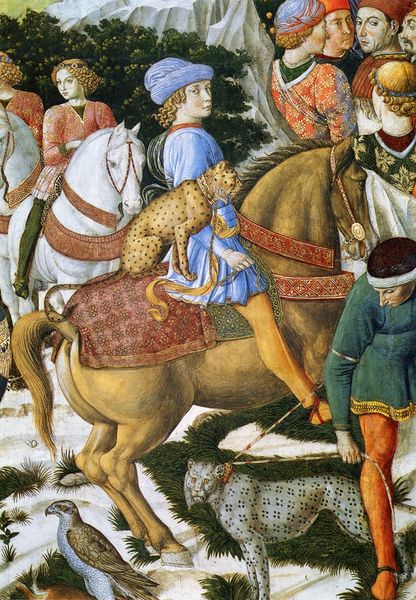
tempera, painting
#
medieval
#
narrative-art
#
tempera
#
painting
#
painted
#
figuration
#
oil painting
#
history-painting
#
italian-renaissance
Copyright: Public domain
Curator: Today we are looking at Giovanni da Milano’s “Cattura di Cristo,” or "The Capture of Christ", a tempera on wood panel dating back to approximately 1355. Editor: What strikes me immediately is the solemn yet urgent mood. There's a weight to each figure, a premonition of suffering rendered with such muted earth tones, only pierced by the vibrant blues and reds. Curator: Precisely. Let’s observe how the artist structures the composition. The receding line of soldiers, their spears creating diagonals that guide the viewer's eye. The use of tempera allows for meticulous detail, note the subtle gradations of color in their robes. Editor: It’s the faces that compel me, or rather the partial obscuring of those faces. The artist powerfully illustrates a brutal machinery that allows men to perpetrate violence while diminishing any sense of individual accountability, particularly in this historical moment. How complicit were those carrying out orders in such events? Curator: Undoubtedly a critical perspective to adopt. I also note how Giovanni departs from strictly adhering to Byzantine conventions that would’ve still been commonplace in panel paintings during this period. Observe the attempts to create depth through the overlapping of figures. Editor: That's important because the representation of space and depth here is far from just an aesthetic exercise. This reflects the changing status of the image, and what that suggests for 14th century society. Curator: There’s also the linear rhythm achieved with such minimal use of ornamentation, contributing to the overall austerity of the scene. We can’t ignore the material aspect either. Tempera’s unique properties, its opacity, contribute to the painting’s flatness. Editor: Yes, let’s be clear that these are the faces of systemic injustice, made to look human, made to appear, as if by composition, their forms fade to suggest something hidden. Giovanni isn’t just capturing Christ, but what came to define this man so central to our own construction. Curator: So the interplay between the formal aspects and social underpinnings provide complementary lenses to explore Giovanni da Milano's masterpiece. Editor: Precisely, and I think interrogating those relationships— between aesthetic form, and social significance is crucial. This panel continues to offer layers of meaning.
Comments
No comments
Be the first to comment and join the conversation on the ultimate creative platform.
